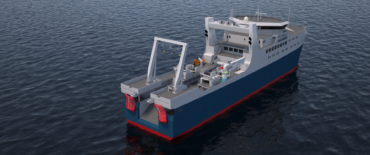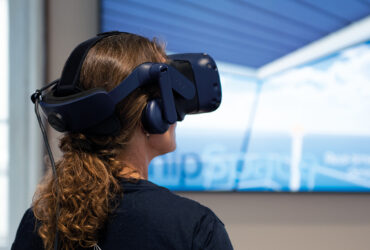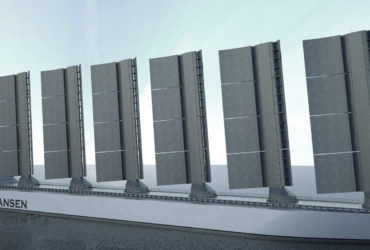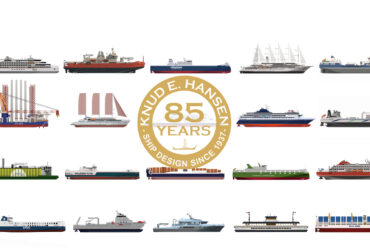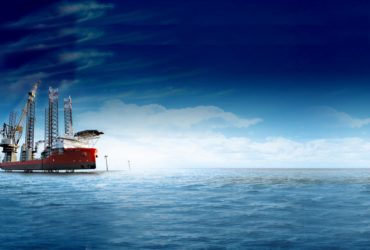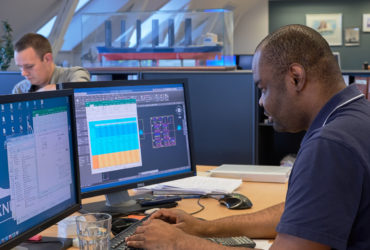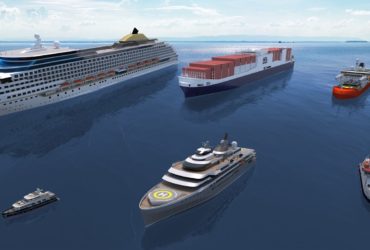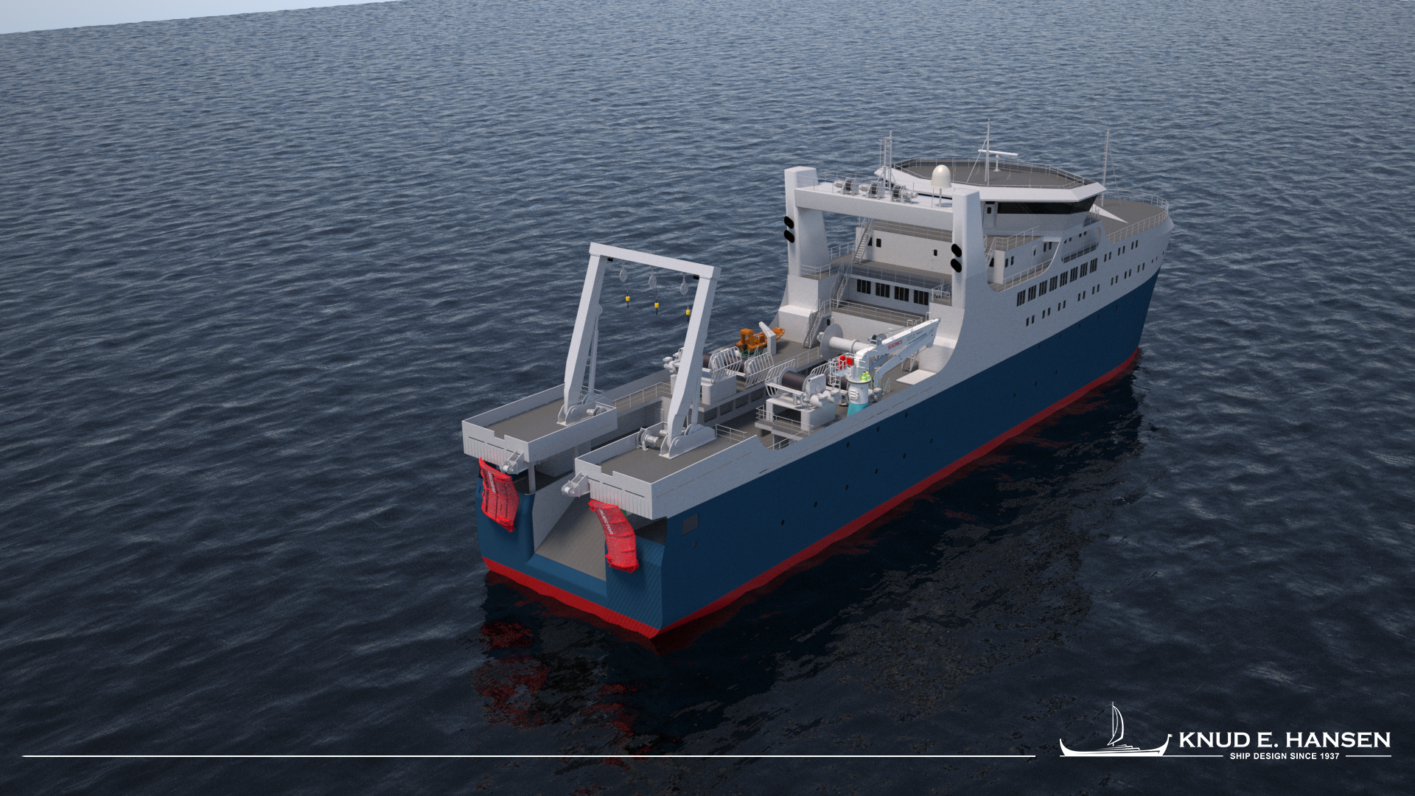An entirely new design for the ocean factory trawler segment has been released by KNUD E. HANSENs Faroe Islands design team. From stem to stern this design redefines the classic trawler layout which has remained more or less unchanged for decades.
The designers state: “The aim of this design is to set new standards for the next generation of ocean factory trawlers, seeking innovation in all solutions and adaption of new technologies to the long proven concept of stern trawlers”.
Why fix what is not broken?
What we have seen in recent years and what our clients in the North Atlantic have stated, is the fact that there have been very little change and improvement in the design of ocean factory trawlers for decades.
Trawlers need large towing power and therefore the engines and propellers keep getting bigger to improve efficiency. As the trawler draught sets a limit for the size of the propeller, trawlers are often designed with a stern trim, which can have a negative effect on the propulsion performance and slamming.
The classic ocean factory trawlers have grown bigger in size and capacity over the years but there has been very little innovation in recent designs and constructions.
The classic stern trawler layout, commonly known as the Norwegian design, originates to some extent from the early Faroese stern trawlers built in Norway. Theses designs have hardly changed over the decades. If you have sailed one, you have sailed them all.
Marni Olsen and Thormund Johannesen explain, that “at KNUD E. HANSEN the evaluation of the original design, construction, components and technology led us to conclude that improvements can be made – and are indeed needed”.
So we set a course to rethink and improve many aspects of the trawler including:
- Construction of the hull, including trim, draught and ballast
- Engines and propulsion system
- The arrangement aft on the trawl deck
- Cargo hold, including accessibility and working conditions
- Stairways and accommodation quarters
- Engine room arrangement
DISTINCTIVE FEATURES OF OUR NEW DESIGN
The new design is a complete rethink of all main features, construction and components of the classic ocean factory trawler. Improvements have been made to almost every aspect of the original layout bringing out an entirely new functionality and simplicity.
Having the cargo hold and engine room kept separated on the lower decks in the full length of the vessel generates the changes of the entire layout. Having a linear arrangement on these decks opens up new options for functionality and workflow, and use of space throughout the entire vessel.
The main distinctive features of our new design include:
- High bulbous bow forward and hull shape aft that gives a good flow to the two propellers. The hull is designed for even trim, with the rise of keel built into the keel
- This trawler does not have traditional seawater ballast tanks. Instead, it features a ballast keel that apart from the solid weight also can contain 150 tonnes of flow-through seawater ballast
- This trawler is designed with diesel electric propulsion system consisting of 4 diesel generators, 2 electric propulsion engines and two ducted fixed-pitch propellers
- The twin slow-rotating electrically driven propellers almost double the propeller disc area compared to a single propeller design. This generates high torque and very good efficiency
- Having the engine room laid out on one deck in full length of the ship significantly improves the practical working conditions for the ocean factory trawler engineer
- The extension of the engine room in full length of the ship also allow us to move the casings for exhaust and ventilation forward. This results in better working area on the trawl-deck aft
- The deck area in the cargo hold is more than double the size of the deck area in a traditional trawler layout. This also gives a practical working height comparable to the height inside a refrigerated container, improving practical working conditions and safety during fishery and when unloading
- The increased working areas aft on the trawl-deck allow us to design improvement for the equipment and handling of fishing gear. The traditional gallows and outhauls are replaced with a single hydraulic A-frame on top of the lifted deck. From this position it can, due to the opening in the upper deck over the trawl slip, cover the area from behind the stern to the aft end of the trawl lanes
Accommodation quarters are all placed forward on deck 4, 5 and 6. On deck 4 there are twenty cabins, on deck 5 and 6 there are six cabins on each deck. The crew lives in single berth 15 m2 cabins, incl. toilet, with the officer’s cabins being somewhat bigger.
The mess-room, galley and saloons are all on deck 5. The mess-room has the capacity to serve the entire crew at the same time and features good visibility through big windows.
There are six stairwells in the ship for all passage between decks to allow the crew to move easily throughout the vessel; two on each side aft, two on each side amidships and two on each side forward.
The accommodation quarters, cabins, corridors and stairwells are arranged so that starboard crew on watch doesn’t need to disturb port crew off duty and vice versa.
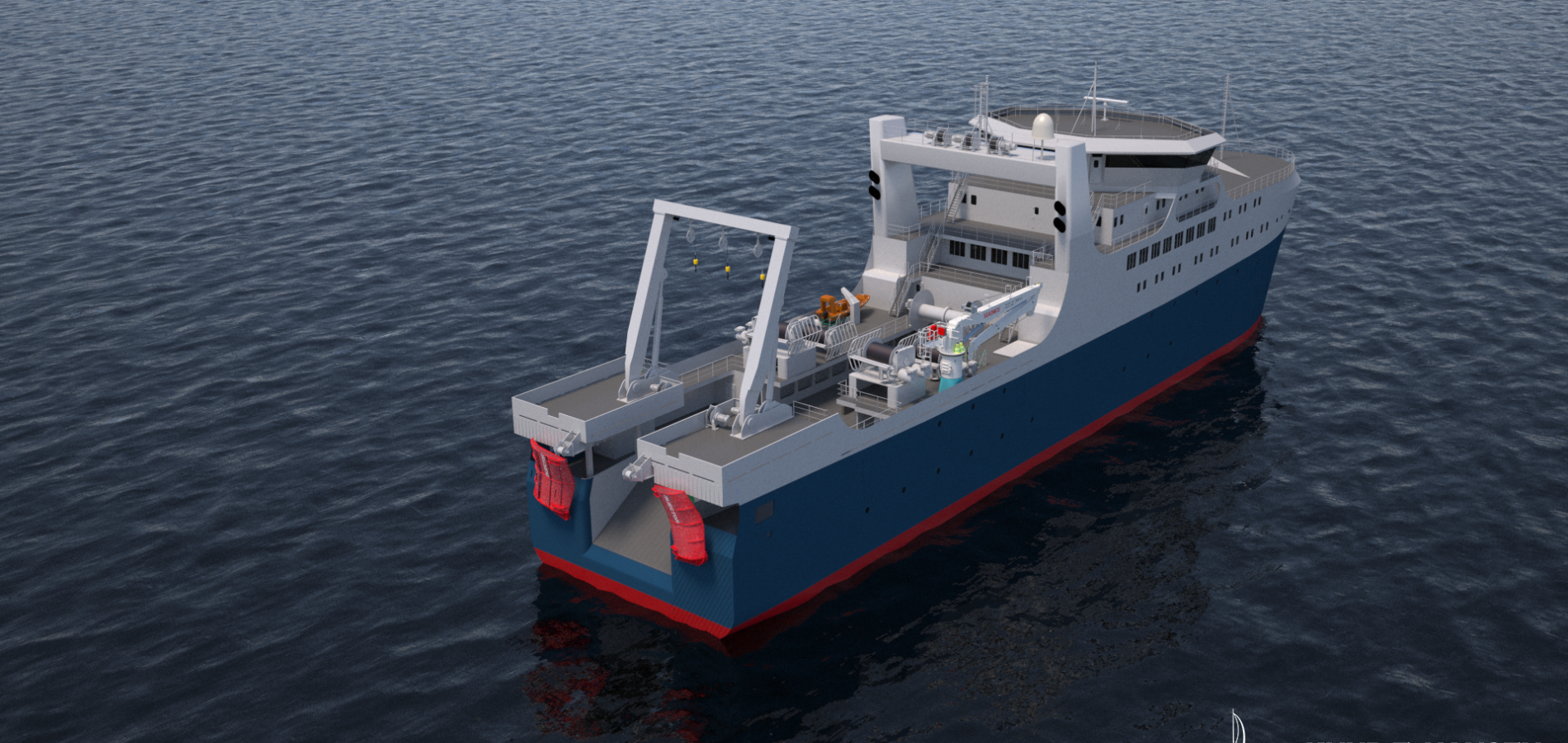
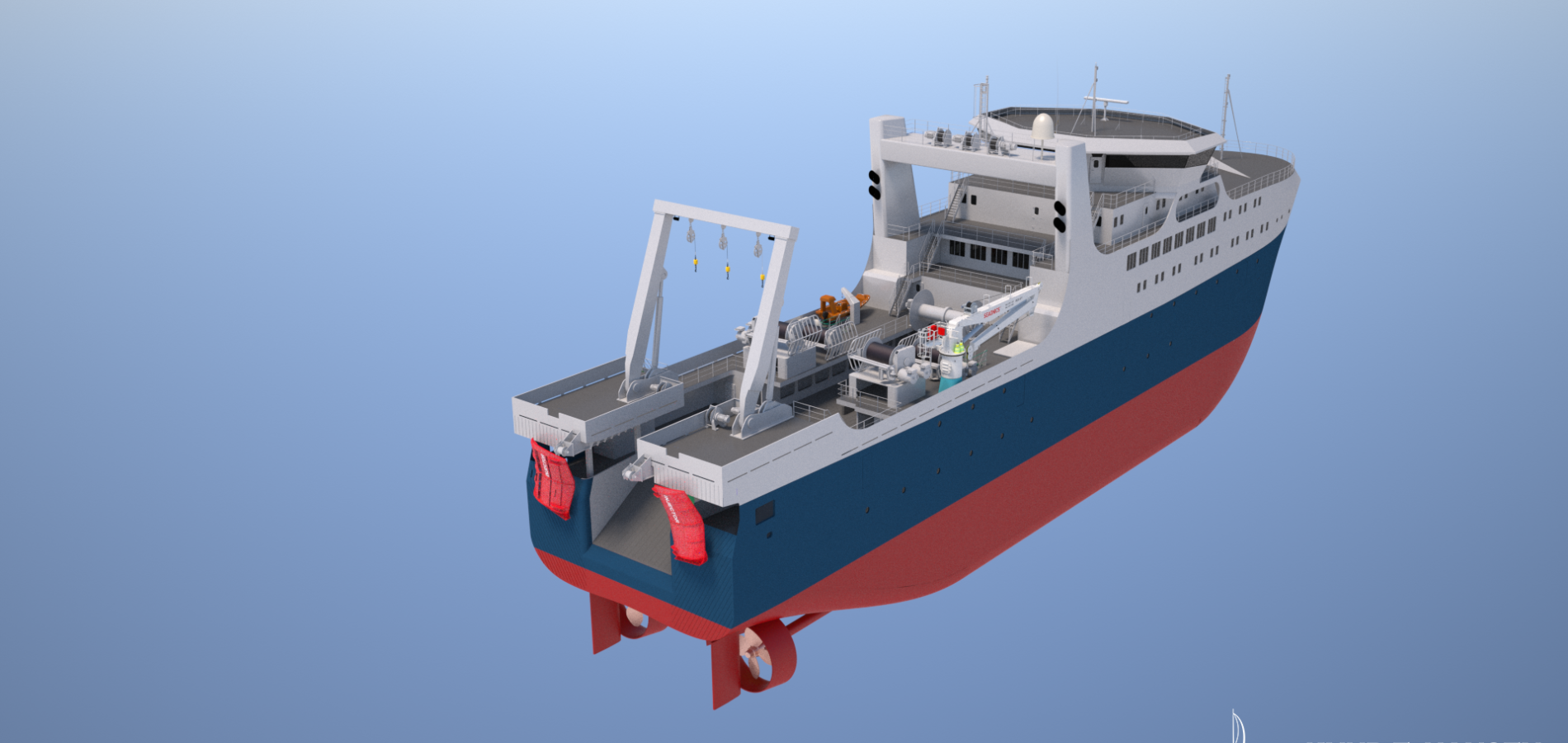
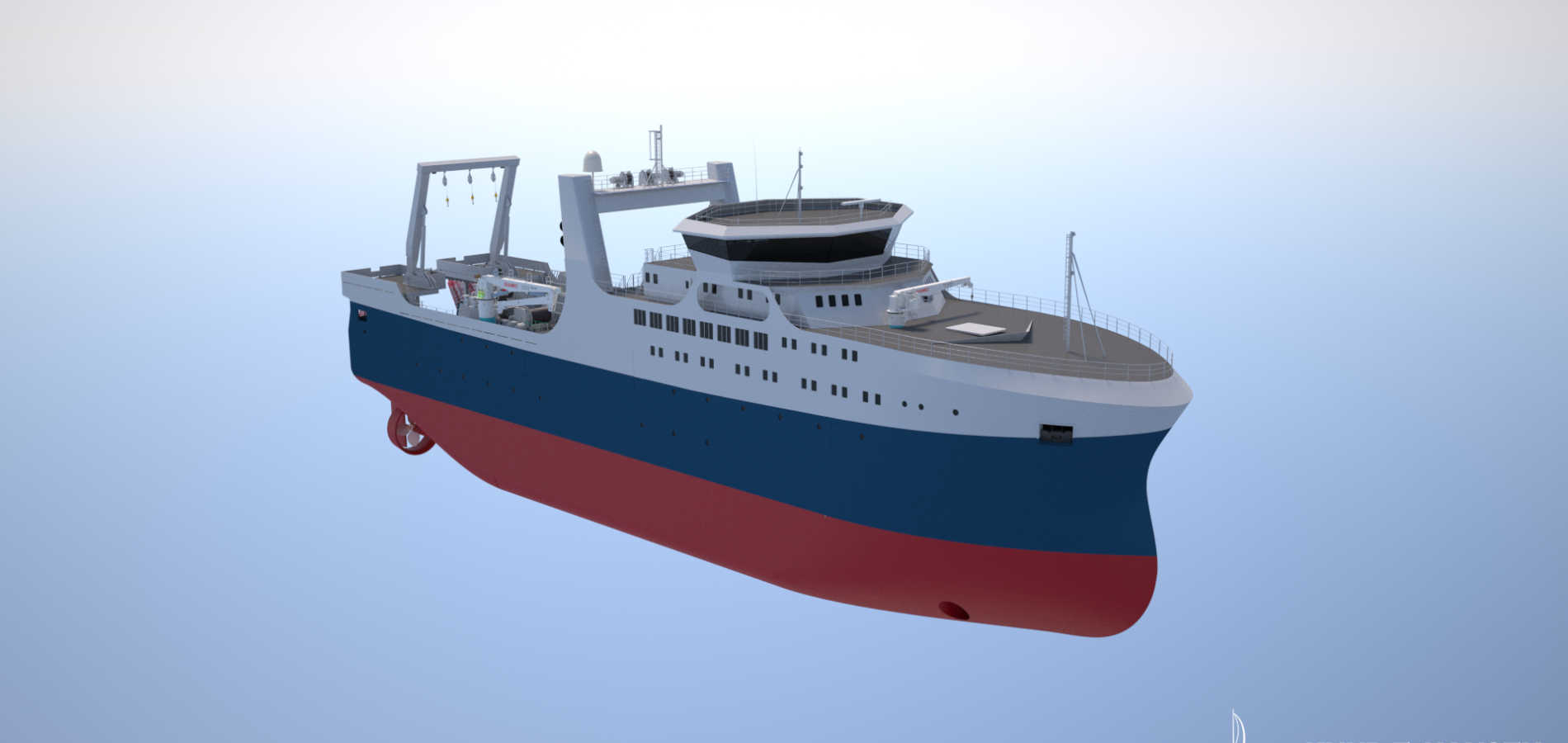

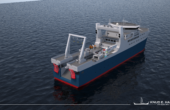
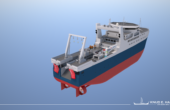
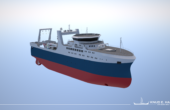
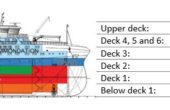
Download press release
Press release
Articles about the project
